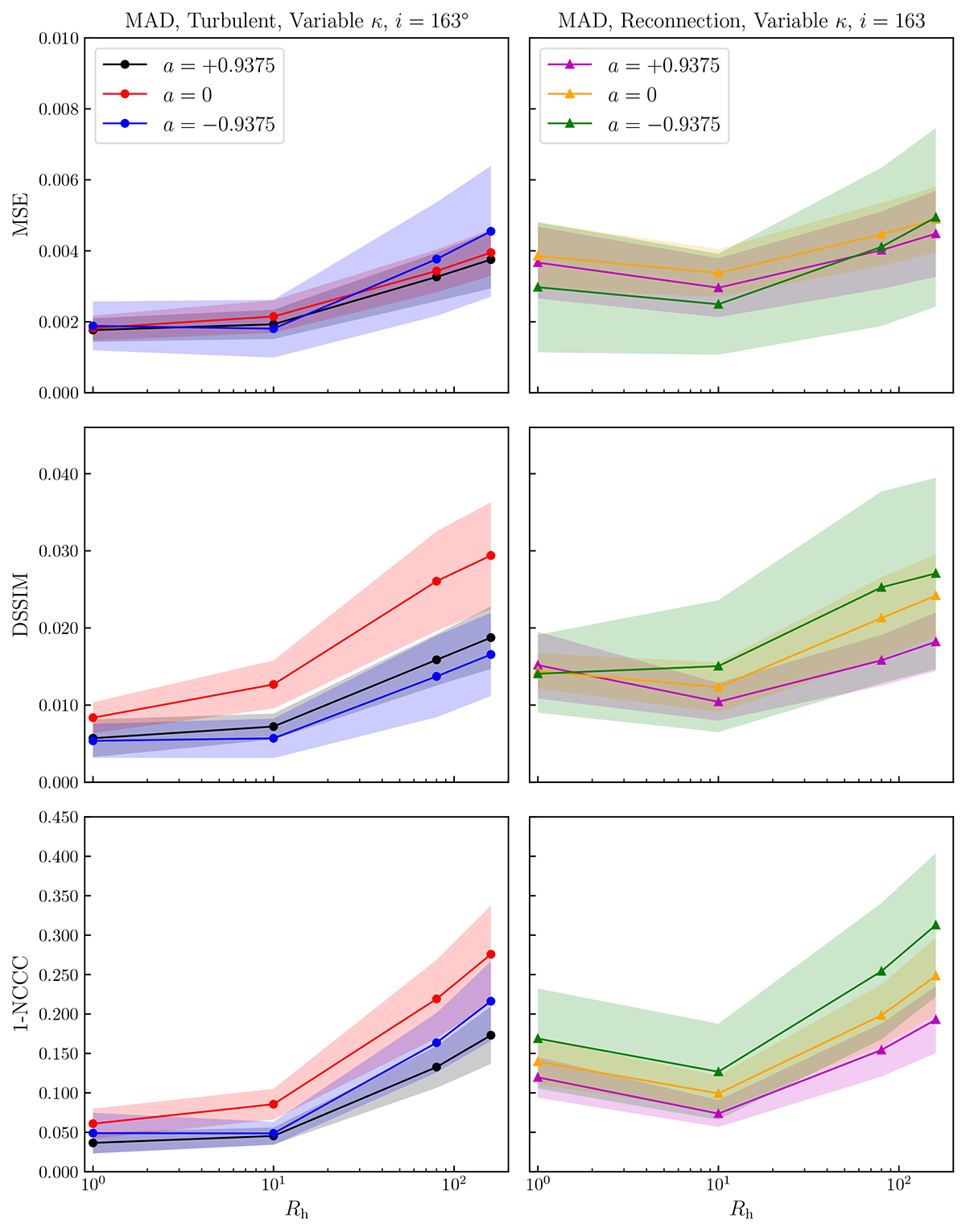Fig. 6.

Download original image
Image comparison between R − β and electron heating models at different spins adopting various quantitative comparison methods with a 163° inclination angle at 230 GHz. From top to bottom: The comparison methods used are MSE, DSSIM, and 1-NCCC, respectively. From left to right, the prescriptions of electron heating models are turbulent and reconnection heating, respectively. The applied eDF is variable κ, and the time-averaged total flux is 0.5 Jy at 230 GHz. The colored dots and triangles represent average values from time variation at the specific spins, and the regions shaded in the same color denote the standard deviation relative to the average values. In all of the comparison methods, the lower value indicates a close match.
Current usage metrics show cumulative count of Article Views (full-text article views including HTML views, PDF and ePub downloads, according to the available data) and Abstracts Views on Vision4Press platform.
Data correspond to usage on the plateform after 2015. The current usage metrics is available 48-96 hours after online publication and is updated daily on week days.
Initial download of the metrics may take a while.


